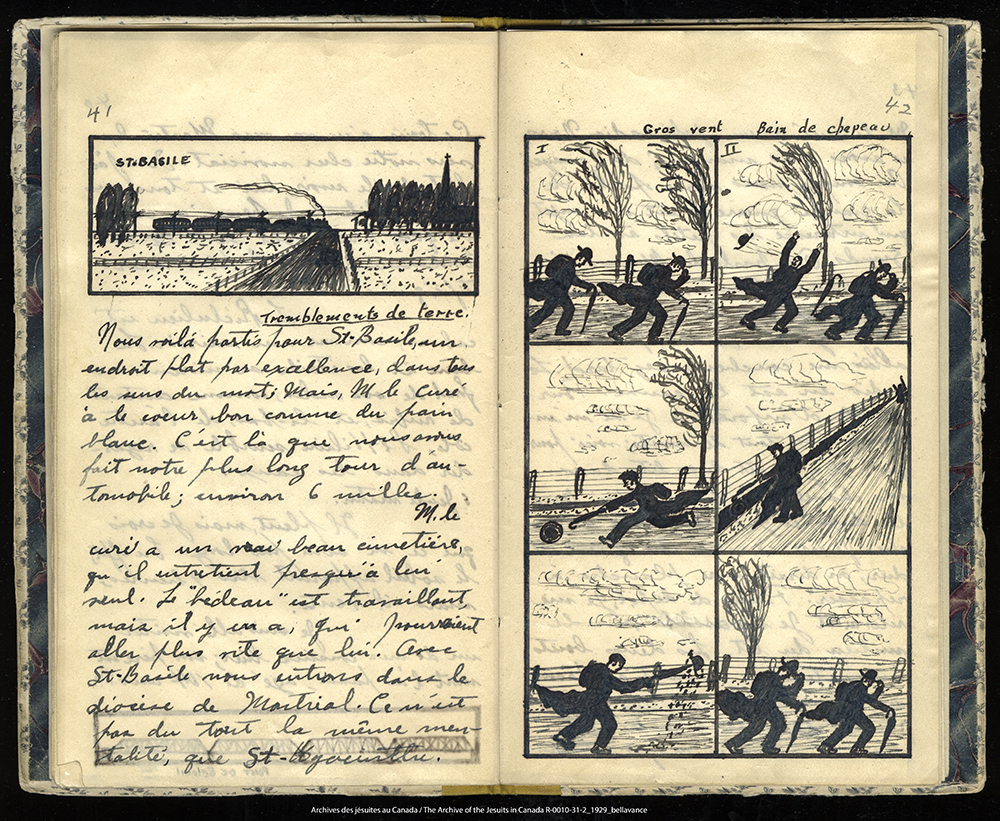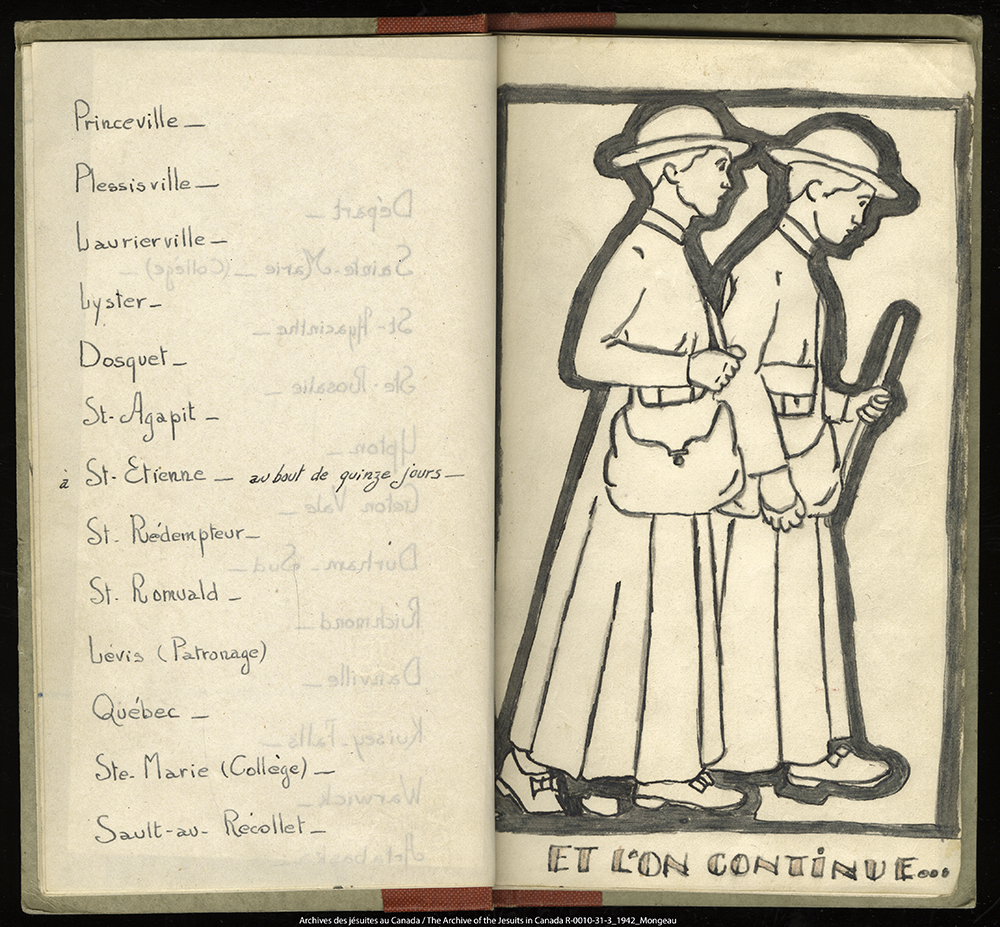Between the years 1864 and 1968, 1456 Jesuit novices from the Sault-au-Récollet undertook a pilgrimage. These young men were instructed to document their journey, and 1078 of the produced narratives survive in the Archive of the Jesuits in Canada, in Montreal. Each pilgrimage report bears testimony to the unique experience of a novice.


A certain genre progressively took shape. The earlier reports were more personal affairs, written on the fly, but they would soon evolve into post-factum narratives, written within a month of the return. While the 20th-century “Rules for Pilgrims” specified that novices should take notes along the way, then write a report within a week of their return, such short delay has not been the constant practice. Reports include descriptions of landscapes, weather, churches, rectories, decorations, and individuals. Most provide edifying narratives about devotional practices (personal prayer, examen, confessions, with an attention to obedience to the rules), description of ministerial activities, or events on the journey. At times, it became normative to have a presentation of the other companion, both in his physical aspect and his character, often in a humorous tone. The general light tone was even claimed overtly by some, since a 1929 report was titled, “New volume of original jokes, censored edition,” leaving no ambiguity to the fact that the author aimed at entertaining his readers. By the 1920s, some reports were clearly sophisticated in their format: overall structure of a play, elaborate sketches, or careful handwriting. A separate page with the itinerary, including sometimes the distances, was often included. The steady evolution of the genre was likely determined by the fact that novices had access to prior reports, by the instructions given to them by the novitiate authorities, but also by the personal creativity of the different novices. Interestingly, self-reflection or soul-searching was in short supply; those reports were not intimate spiritual diaries. They were enthusiastic narratives of young men.